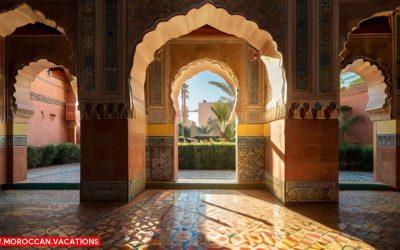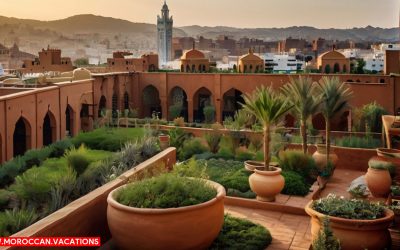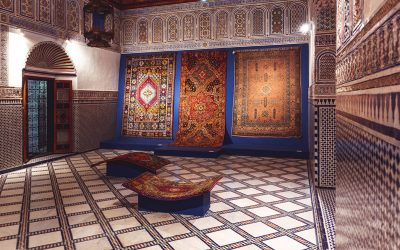History and Origins
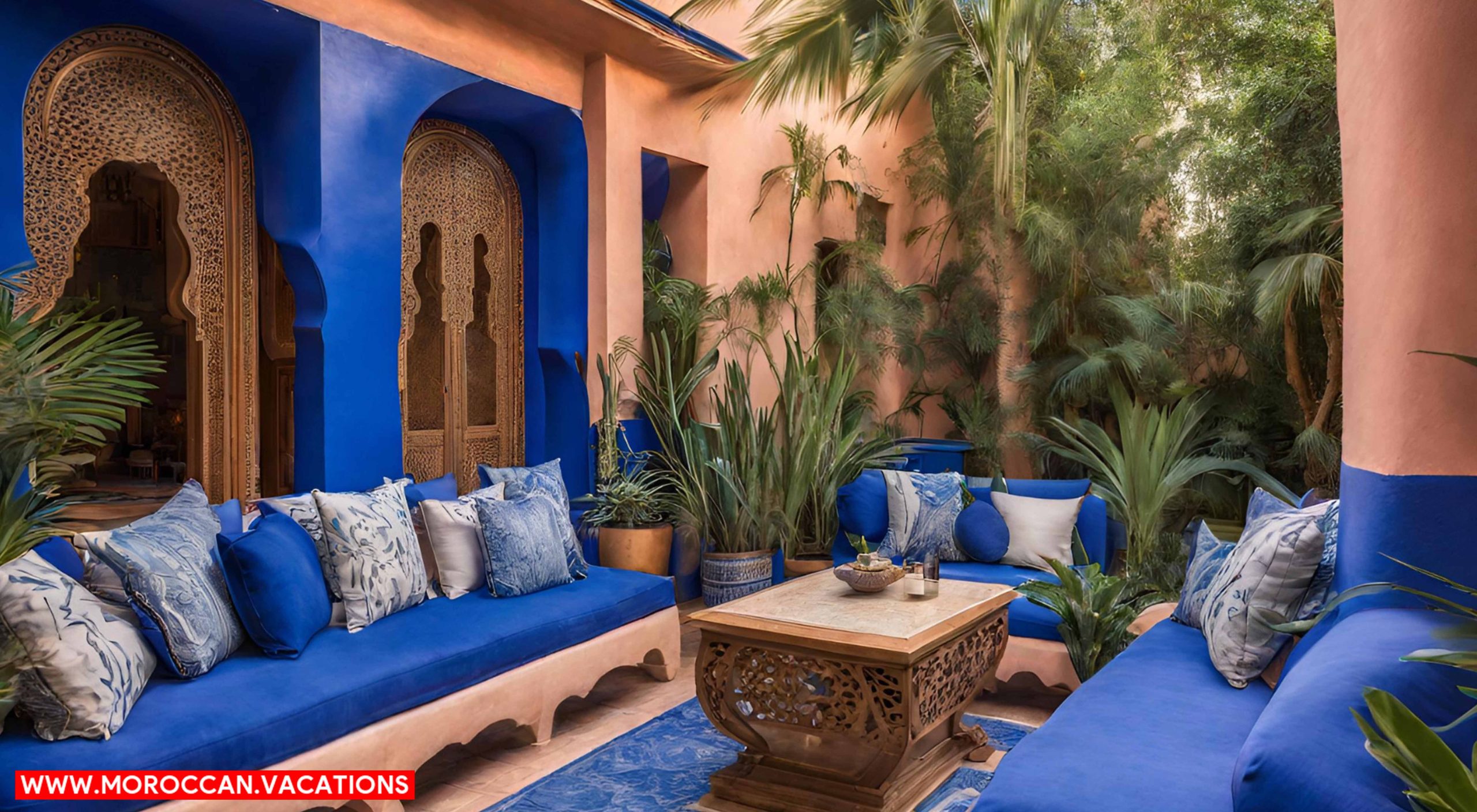

Imagine stepping into a vibrant oasis, where exotic plants and cascading waterfalls transport you to a world of tranquility. Welcome to the Majorelle Garden, a botanical masterpiece nestled in the heart of Marrakesh. With its unique blend of art, architecture, and lush greenery, this enchanting sanctuary promises an unforgettable experience. Explore the history and origins, marvel at the captivating design, and discover the hidden gems that await. Get ready to immerse yourself in the beauty and freedom of the Majorelle Garden.
First, let’s delve into the history and origins of the Majorelle Garden. This iconic botanical masterpiece in Marrakesh, Morocco, was created by French painter Jacques Majorelle in the early 20th century. Majorelle fell in love with the vibrant colors of North Africa during his travels and decided to make Marrakesh his permanent home. He purchased a piece of land and began designing a garden that would reflect his artistic vision.
The Majorelle Garden’s influence extends far beyond its aesthetic beauty. Over the years, it has become a symbol of cultural significance, representing the fusion of Moroccan and French influences. Majorelle’s use of bold, vibrant colors in his garden design reflects the vibrant spirit of the Moroccan people and their rich cultural heritage.
The garden’s architectural elements, such as the iconic blue buildings and intricate tile work, showcase the famed Moroccan craftsmanship. The garden also features a collection of exotic plants from around the world, including rare cacti and palm trees, further highlighting the diversity of the region.
Today, the Majorelle Garden stands as a testament to the power of art and nature to transcend boundaries and create a harmonious space. Its cultural significance and influence can be felt not only within the art and gardening communities but also among those who seek freedom, inspiration, and a deeper connection with the natural world.
Design and Layout
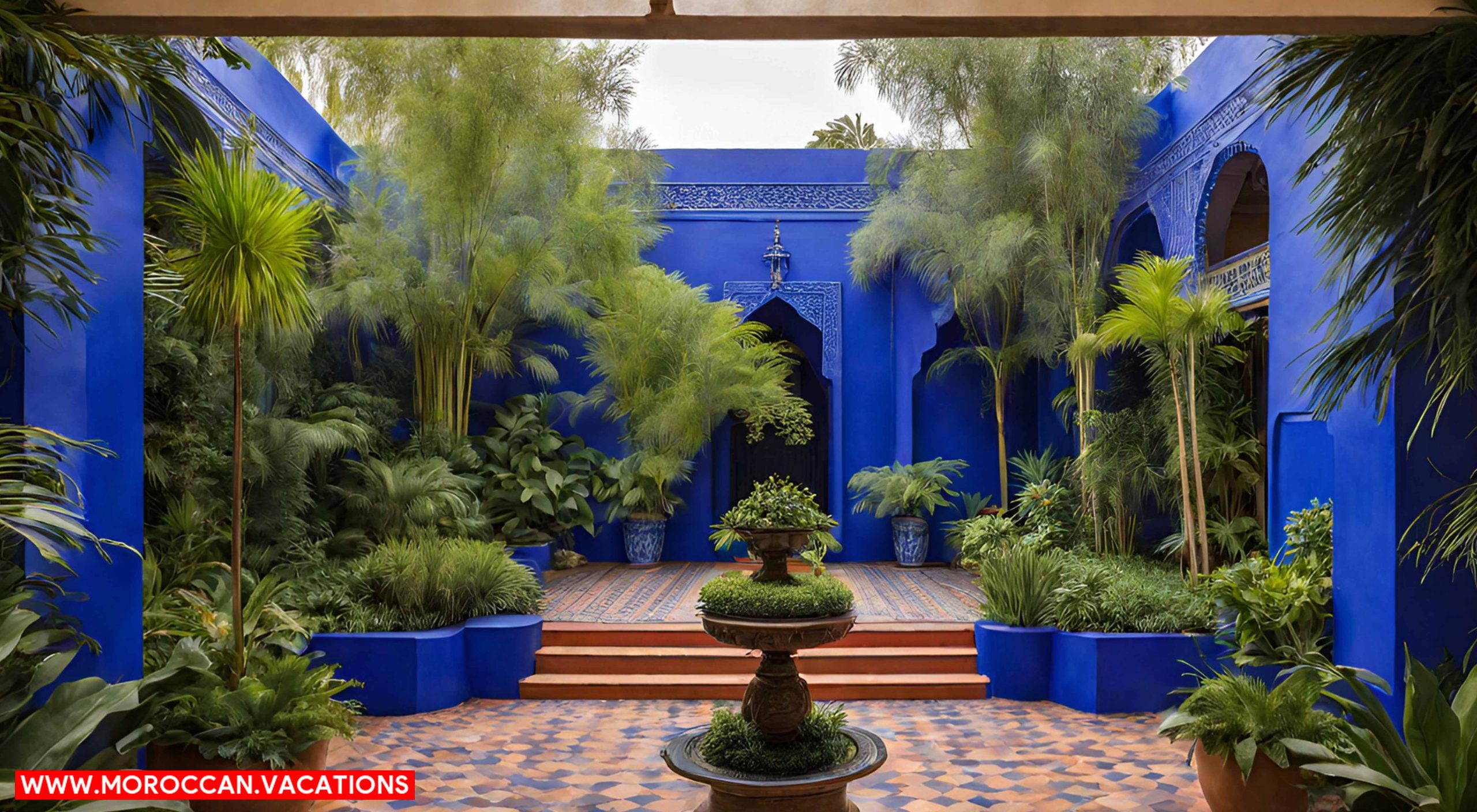

To understand the design and layout of the Majorelle Garden, you must step back in time to the early 20th century. The garden was created by French painter Jacques Majorelle, who incorporated his artistic vision into every aspect of its design. Following the principles of landscape planning, Majorelle sought to create a harmonious balance between nature and art.
The garden’s layout is carefully structured, with winding pathways that lead visitors through a variety of plantings and features. Majorelle used a combination of exotic and native plants, creating a vibrant and diverse botanical collection. The garden is divided into several distinct areas, each with its own unique character and purpose. From the tranquil calm of the bamboo forest to the vibrant explosion of color in the cactus garden, every corner of the Majorelle Garden offers a different experience.
In addition to its plantings, the garden also features architectural elements that enhance its design. Majorelle incorporated traditional Moroccan elements, such as fountains, pavilions, and tiled walkways, creating a seamless blend of nature and man-made structures. The use of vibrant blue accents throughout the garden adds a touch of whimsy and charm.
Unique Plant Species
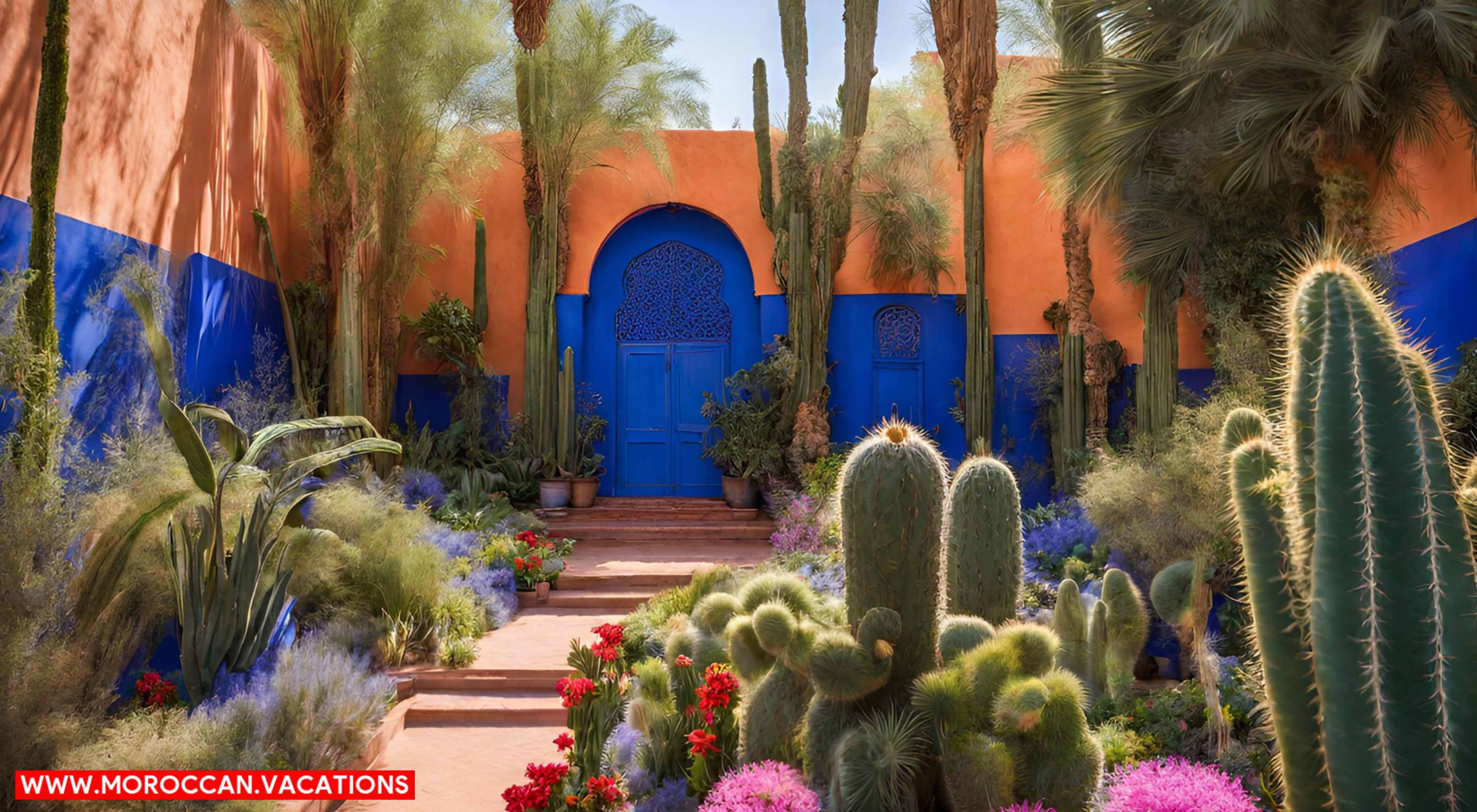

As you explore the Majorelle Garden, you will encounter a wide array of unique plant species that contribute to its botanical brilliance. This exotic oasis is not only a feast for the eyes but also a sanctuary for endangered plants. The garden’s commitment to preserving these rare species is evident in its meticulous gardening techniques.
To fully appreciate the diversity of plant life in the Majorelle Garden, take a moment to explore the following table:
| Plant Species | Characteristics |
| Blue Agave | Succulent plant with striking blue-green leaves and sharp spines |
| Desert Rose | Drought-resistant plant with vibrant pink flowers and thick, fleshy stems |
| Moroccan Palm | Tall palm tree with feathery fronds and a slender trunk |
| Bougainvillea | Climbing vine with vibrant-colored bracts and delicate white flowers |
| Silver Torch Cactus | Unique cactus with tall, columnar stems covered in silver spines |
These endangered plants thrive in the Majorelle Garden thanks to the gardeners’ careful cultivation techniques. The expert team employs sustainable practices such as proper irrigation, organic fertilizers, and natural pest control methods. By creating an environment that closely mimics their natural habitats, the garden ensures the survival and growth of these precious species.
The presence of these unique plant species not only adds to the visual splendor of the Majorelle Garden but also highlights the importance of conservation efforts. By visiting this botanical masterpiece, you not only experience the beauty of these endangered plants but also contribute to their preservation.
Water Features and Pools
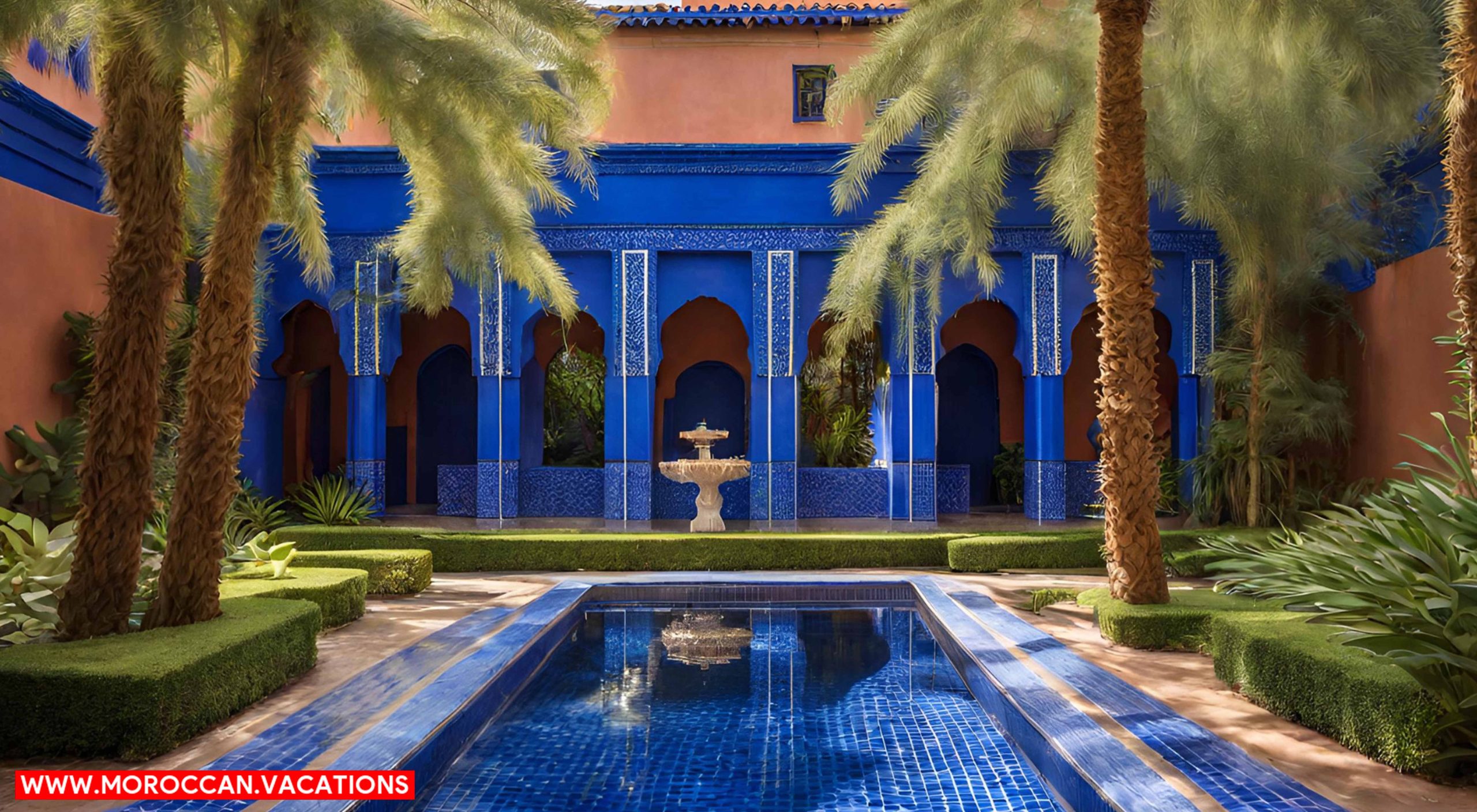

As you continue your exploration of the Majorelle Garden, you will be captivated by the enchanting water features and pools scattered throughout this botanical masterpiece. These water features not only add to the visual appeal of the garden but also serve important maintenance and sustainability purposes. The pools are carefully designed to collect and store rainwater, which is then used to irrigate the plants, ensuring their health and vitality. This sustainable water management system is crucial in a place like Marrakesh, where water scarcity is a pressing issue.
Beyond their practical function, the water features and pools in the Majorelle Garden also hold great symbolic and cultural significance. Water has always been a precious resource in the arid regions of Morocco, and its presence in the garden represents abundance, fertility, and life. The sound of flowing water creates a serene and peaceful atmosphere, inviting visitors to relax and contemplate the beauty of nature.
In addition, the pools and fountains in the Majorelle Garden showcase the intricate Moroccan craftsmanship and design. The mosaic tiles that adorn the edges of the pools are a testament to the rich artistic heritage of the region. Each tile is meticulously placed by skilled artisans, adding to the overall aesthetic appeal of the garden.
Majorelle’s Blue Villa
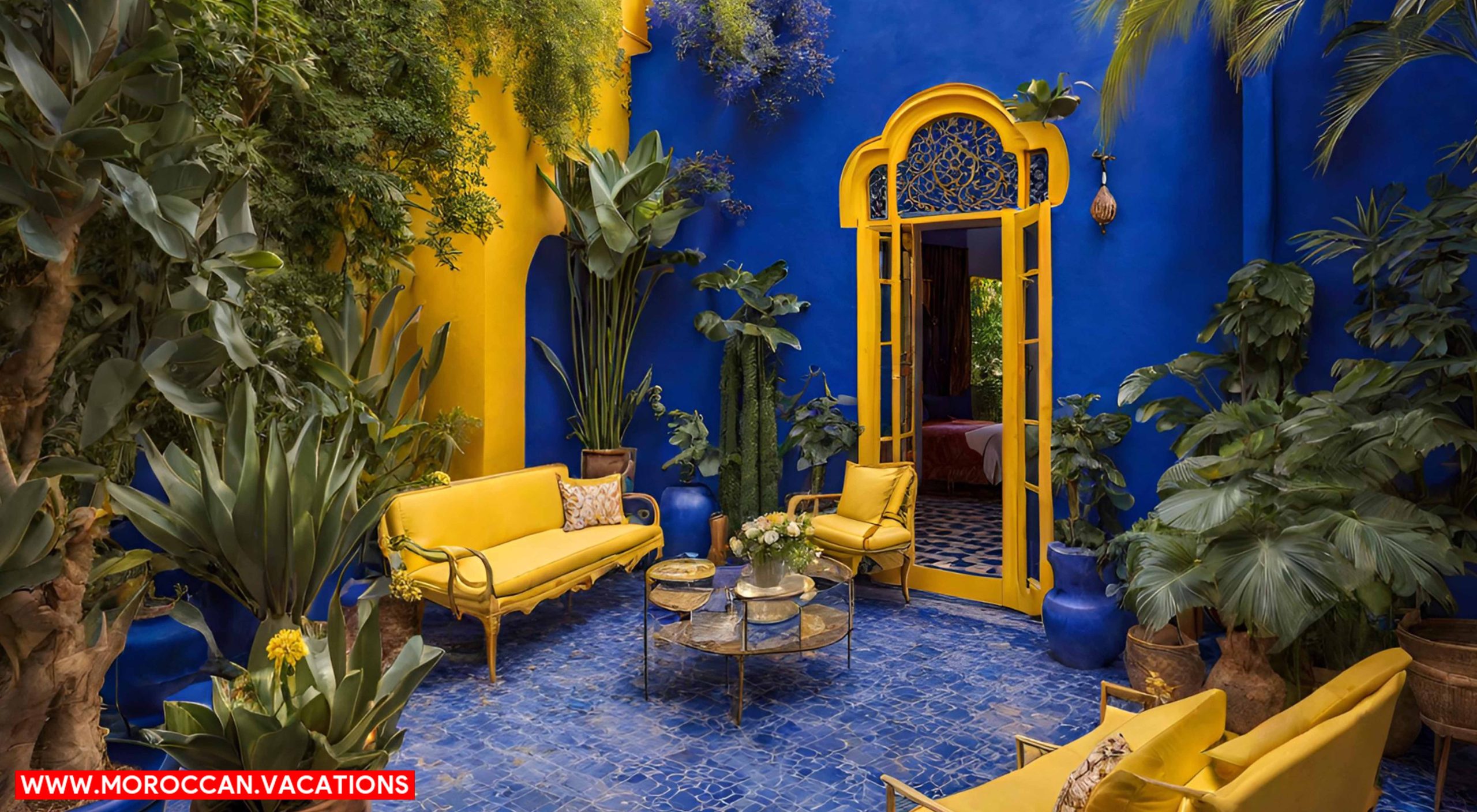

When you step inside the Majorelle Garden, you will be greeted by the captivating sight of Majorelle’s Blue Villa. This iconic villa, painted in a vibrant shade of blue known as “Majorelle blue,” is not only a visual delight but also holds immense cultural significance. Originally designed and built by French painter Jacques Majorelle in the 1920s, the villa served as his personal residence and art studio. Over the years, the villa fell into disrepair until it was acquired by fashion designer Yves Saint Laurent and his partner Pierre Bergé in 1980. Recognizing its historical and aesthetic value, they initiated extensive renovation plans to restore the villa to its former glory. The villa now stands as a testament to Majorelle’s artistic vision and serves as a museum, showcasing his vibrant paintings and personal collection. Its cultural significance lies in its contribution to the preservation of Moroccan heritage and the celebration of Majorelle’s artistic legacy. The villa’s blue facade has become an iconic symbol of Marrakesh, attracting visitors from around the world who are drawn to its vibrant charm and historical importance.
Art and Architecture
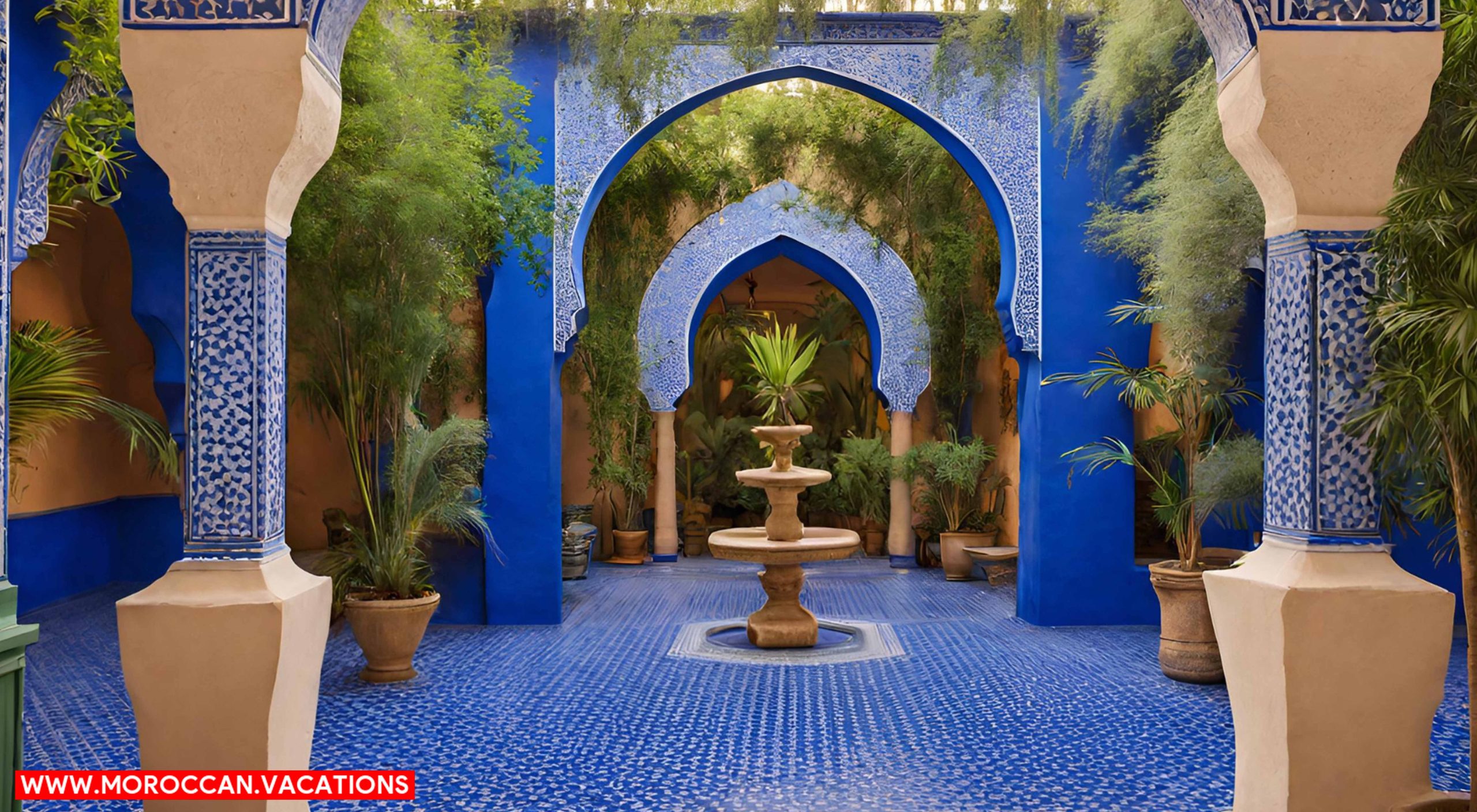

Explore the artistic and architectural marvels of the Majorelle Garden with its stunning displays of creativity and design. The garden, created by French painter Jacques Majorelle in the 1920s and later restored by fashion designer Yves Saint Laurent and his partner Pierre Bergé, is not only a haven for nature enthusiasts but also a testament to the importance of art preservation and cultural significance.
The Majorelle Garden is a true work of art, with its vibrant cobalt blue structures and intricate architectural details. The famous blue villa, with its striking color and Moorish-inspired design, stands out against the lush greenery of the garden. The attention to detail in the architecture is simply astounding, from the ornate doorways and windows to the decorative tiles and patterns.
Art preservation is a key aspect of the Majorelle Garden. It was Majorelle’s lifelong passion to create a botanical oasis that showcased his artistic vision. The garden itself is a living testament to his love for art and nature. The careful restoration by Saint Laurent and Bergé not only preserved Majorelle’s original vision but also added their own artistic touches, such as the addition of sculptures and fountains.
The cultural significance of the Majorelle Garden cannot be overstated. It has become an iconic symbol of Marrakesh, attracting visitors from all over the world. Its unique blend of art, architecture, and nature creates an atmosphere of tranquility and beauty. The garden also houses the Berber Museum, which showcases the rich cultural heritage of the Berber people.
Exploration and Visitor Tips
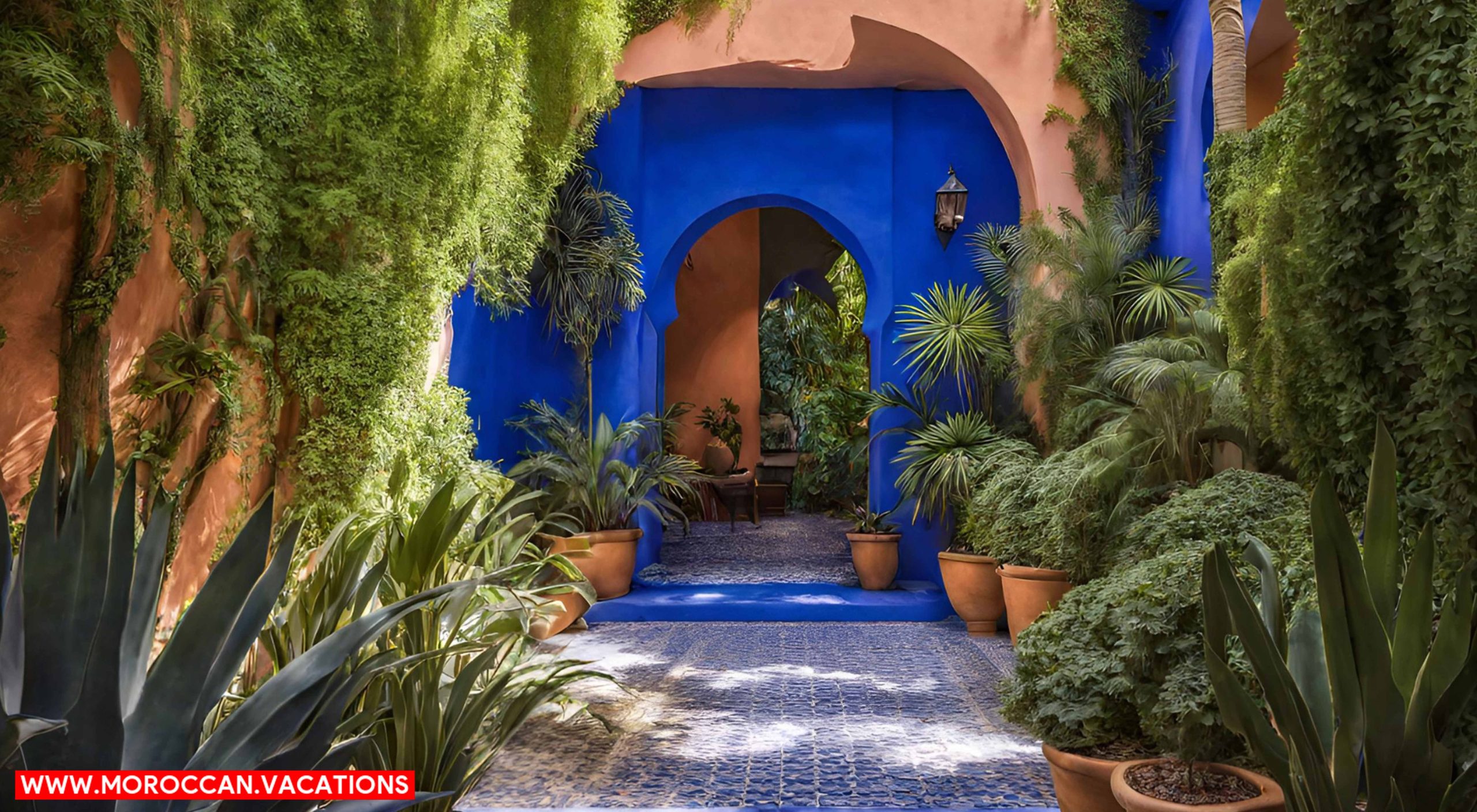

To fully immerse yourself in the wonders of the Majorelle Garden, make sure to plan your visit and take note of these helpful tips. The garden is vast, spanning over two and a half acres, so it’s important to have a strategy in place to explore all its splendors. One of the best exploration techniques is to start from the entrance and follow the designated paths, which will lead you through the various sections of the garden. This way, you won’t miss any of the incredible flora and fauna that the garden has to offer.
When planning your visit, it’s also important to consider the seasonal attractions of the Majorelle Garden. The garden is at its most vibrant during the spring and early summer months, when the flowers are in full bloom and the colors are at their peak. However, visiting during the fall and winter months also has its own charm, as you can witness the changing foliage and enjoy a more peaceful and serene atmosphere.
To fully enjoy your visit, it is recommended to wear comfortable walking shoes and bring a hat and sunscreen, as the garden offers limited shade. Additionally, bring a camera to capture the beauty of the garden and a water bottle to stay hydrated throughout your exploration.


Samira Amrani
The passionate author behind Moroccan Vacations, sharing her expertise and love for Moroccan culture, cuisine, and travel experiences to inspire wanderlust in every reader.
Related Articles
The Splendor of Moroccan Zellige Tilework in Marrakesh's Architecture
A Rich History of Zellige Tilework Step into the world of Moroccan architecture and marvel at the splendor of Zellige tilework in Marrakesh. Immerse yourself in the rich history and artistry of this ancient craft as you explore the intricate geometric patterns and...
Marrakesh's Rooftop Gardens: Oasis of Tranquility Above the City
The History of Marrakesh's Rooftop Gardens Escape the bustling streets of Marrakesh and discover a hidden oasis above the city. Welcome to Marrakesh's rooftop gardens, where tranquility reigns and serenity awaits. These lush green spaces, tucked away amidst the...
Marrakesh's Architectural Treasures: Exploring the City's Palaces and Riads
Uncover Marrakesh’s architectural treasures with a journey through its palaces and riads. Explore the intricate designs, vibrant colors, and rich history of these iconic landmarks. Immerse yourself in the opulence of Moroccan architecture and experience the allure of Marrakesh’s cultural heritage.

